Sanyi, a small town in Miaoli County, is renowned for wood carvings in Taiwan and has held its own annual wood-sculpture festival for years. What makes the festival different this year, however, is that it features a collection of wooden musical instruments from all over the world and tries to incorporate 16 international and local music groups into this fun activity. The festival formally began yesterday and will run until Aug. 29.
The festival's major venue is located at the West Lake Resortopia (
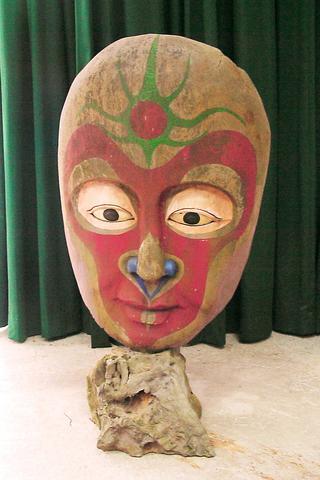
PHOTO: DEREK LEE, TAIPEI TIMES
Art curator Casper Tsai (
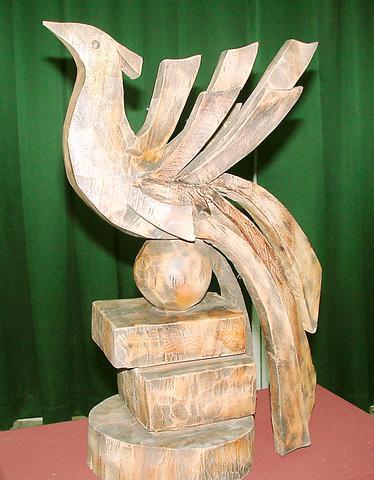
One thing that deserves mentioning is that 56 of the musical instruments in this exhibit come from 39 countries and belong to a part of the private collections of one person. Sui Hao-ping (
Among all of the participating artists in the exhibit, the wood artworks by the late Chiu Hua-hai (
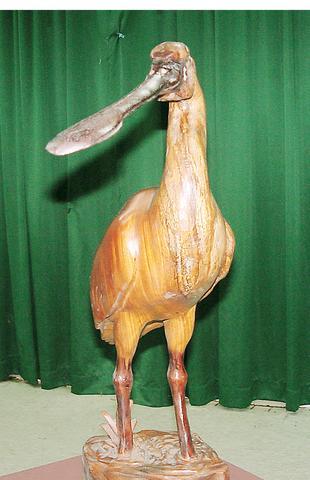
For one thing, Chiu's creations sprang from his own close observation of each object in the countryside. Chiu would spend days conducting surveillance on his target object and refused to do carvings in any hasty way. As Wang Chi-yuan (
The artwork was purchased right away by a Japanese private collector as soon as it was completed. Nevertheless, the blood and sweat that Chiu contributed to every piece have become legend in Sanyi, which has kept reminding local young artists to always prepare themselves well before applying their carving knives.
The scope of Chiu's creations was very broad. He dealt with woodcarving as well as bronze sculpture, just like his much more well-known classmate, Ju Ming. Some of his marvelous bronze creations in the shapes of the 12 Chinese zodiac animals are now displayed along a tree-canopied trail on one of the hills of the West Lake Resortopia. All these bronze cartoon-like figures are a bit short of human size, but the facial expression of each animal gives the viewers a very clever and pleasant feeling.
The woodcarving industry in Sanyi has been undergoing a difficult period for quite sometime, due to the drastic fall in export trade. One estimate has indicated that the number of wood sculptors in the town has dropped to a little more than 100 in recent years, which may be an indication that young people are turning away from this trade. The problem has prompted local artists to pose the question of how to transform the traditional woodcarving into a more contemporary means of artistic creation. The answer to this question may not be easy, but the time is obviously running out for the woodcarving artists in Taiwan.
Exhibition note:
What: The International Sanyi Wood Sculpture Festival 2004
When: Through Aug. 29
Where: Sanyi, Miaoli County

In the next few months tough decisions will need to be made by the Taiwan People’s Party (TPP) and their pan-blue allies in the Chinese Nationalist Party (KMT). It will reveal just how real their alliance is with actual power at stake. Party founder Ko Wen-je (柯文哲) faced these tough questions, which we explored in part one of this series, “Ko Wen-je, the KMT’s prickly ally,” (Aug. 16, page 12). Ko was open to cooperation, but on his terms. He openly fretted about being “swallowed up” by the KMT, and was keenly aware of the experience of the People’s First Party
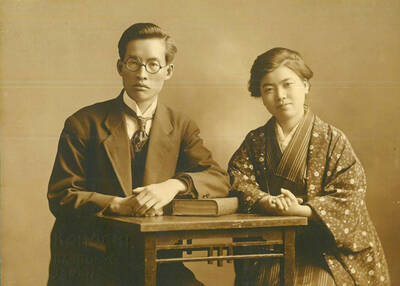
Aug. 25 to Aug. 31 Although Mr. Lin (林) had been married to his Japanese wife for a decade, their union was never legally recognized — and even their daughter was officially deemed illegitimate. During the first half of Japanese rule in Taiwan, only marriages between Japanese men and Taiwanese women were valid, unless the Taiwanese husband formally joined a Japanese household. In 1920, Lin took his frustrations directly to the Ministry of Home Affairs: “Since Japan took possession of Taiwan, we have obeyed the government’s directives and committed ourselves to breaking old Qing-era customs. Yet ... our marriages remain unrecognized,

Not long into Mistress Dispeller, a quietly jaw-dropping new documentary from director Elizabeth Lo, the film’s eponymous character lays out her thesis for ridding marriages of troublesome extra lovers. “When someone becomes a mistress,” she says, “it’s because they feel they don’t deserve complete love. She’s the one who needs our help the most.” Wang Zhenxi, a mistress dispeller based in north-central China’s Henan province, is one of a growing number of self-styled professionals who earn a living by intervening in people’s marriages — to “dispel” them of intruders. “I was looking for a love story set in China,” says Lo,
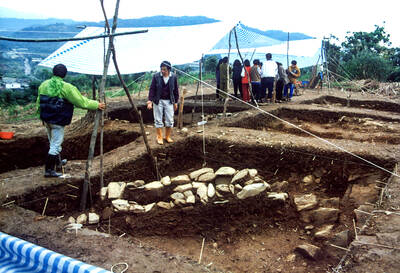
During the Metal Ages, prior to the arrival of the Dutch and Chinese, a great shift took place in indigenous material culture. Glass and agate beads, introduced after 400BC, completely replaced Taiwanese nephrite (jade) as the ornamental materials of choice, anthropologist Liu Jiun-Yu (劉俊昱) of the University of Washington wrote in a 2023 article. He added of the island’s modern indigenous peoples: “They are the descendants of prehistoric Formosans but have no nephrite-using cultures.” Moderns squint at that dynamic era of trade and cultural change through the mutually supporting lenses of later settler-colonialism and imperial power, which treated the indigenous as